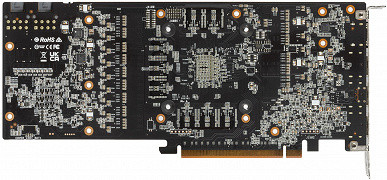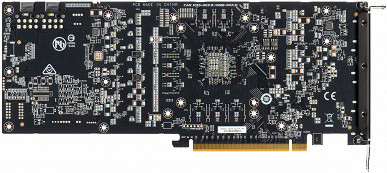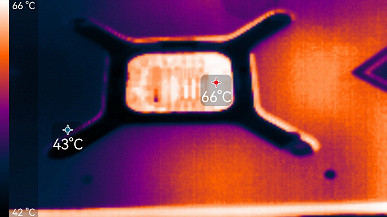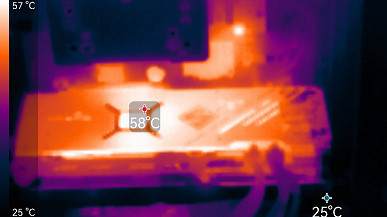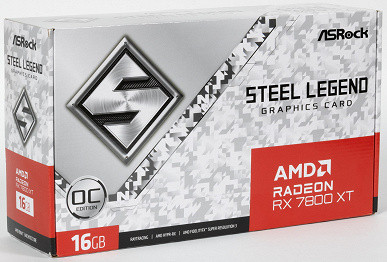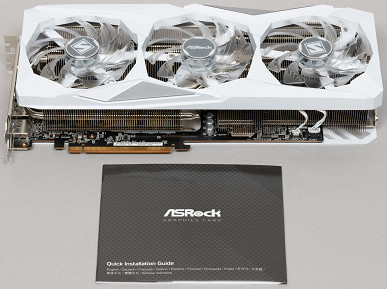Briefly about the main thing
At the main IT exhibition of the year, Computex 2024 in Taiwan, there were no special new products presented in the video card segment, since new generations are expected only at the end of this year. Therefore, the exhibition was quiet, and the sluggish price decline continues on the market.
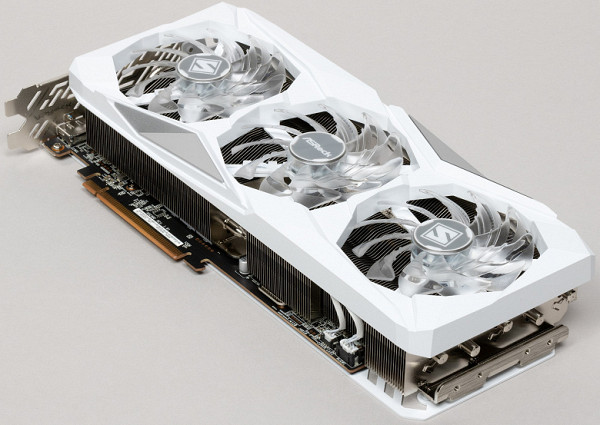
Today we are reviewing the AMD Radeon RX 7800 XT graphics card from ASRock, the fourth-fastest among modern 3D accelerators. In our review, we are looking at a model from the Steel Legend series, known for its stylish finish and light-colored cooling system. Previously, ASRock only released motherboards in this series, but now they have also added video cards.
The cooling system in the Steel Legend series is effective but compact. The fans have transparent blades with ARGB backlighting, which can be turned off using a physical switch on the end of the card.
Before moving on to detailed tests, we present a brief overview of the performance of this series and its competitors, evaluating them subjectively on a seven-point scale.
Games without ray tracing (classic rasterization):
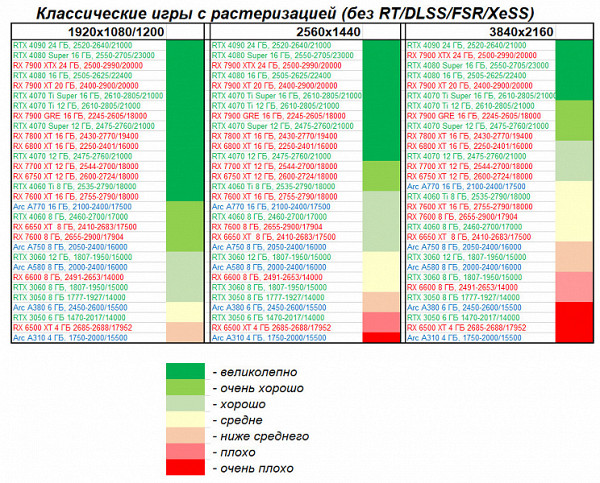
As a reminder, the Radeon RX 7800 XT delivers excellent performance in games without ray tracing at resolutions from 1080p to 2160p (4K). This card outperforms both its predecessor, the Radeon RX 6800 XT, and the more powerful previous-generation models. In classic games, the Radeon RX 7800 XT competes with the GeForce RTX 4070 Super.
Games using ray tracing and DLSS/FSR/XeSS:

In games with ray tracing and FSR/XeSS technologies, the Radeon RX 7800 XT delivers comfortable performance only at 1080p and 1440p. At 4K resolution, its performance remains at an acceptable level. In such games, the Radeon RX 7800 XT can compete mainly with the GeForce RTX 4060 Ti; even the GeForce RTX 4070 offers significantly better performance thanks to DLSS 3 support. Although FSR 3-enabled games are emerging that significantly improve the situation for the Radeon RX 7800 XT and other AMD cards, such games are still few and far between.
Card characteristics


ASRock was founded in 2002 in Taiwan as a subsidiary of Asustek (Asus). Headquartered in Taipei, the company was initially created to compete with Foxconn and other major players in the OEM market. In 2010, after Asustek was restructured and ODM production was separated into a separate company, Pegatron, the ASRock brand became part of Pegatron. Since then, ASRock has been used by Pegatron as a trademark for retail products. Currently, ASRock is engaged in the production of motherboards, graphics cards, industrial PCs and other products. The production facilities are owned by Pegatron, and ASRock has about 200 employees engaged in development, marketing and sales.
| ASRock Radeon RX 7800 XT Steel Legend OC 16GB 256-bit GDDR6 | ||
|---|---|---|
| Parameter | Meaning | Nominal value (reference) |
| GPU | Radeon RX 7800 XT (Navi32) | |
| Interface | PCI Express x16 4.0 | |
| GPU Operating Frequency (ROPs), MHz | 2520(Boost)—2815(Max) | 2430(Boost)—2770(Max) |
| Memory frequency (physical (effective)), MHz | 2425 (19400) | 2425 (19400) |
| Memory bus width, bit | 256 | |
| Number of computing units in a GPU | 60 | |
| Number of operations (ALU/CUDA) in a block | 64 | |
| Total number of ALU/CUDA blocks | 3840 | |
| Number of texture units (BLF/TLF/ANIS) | 240 | |
| Number of rasterization units (ROP) | 96 | |
| Number of Ray Tracing Blocks | 60 | |
| Number of tensor blocks | — | |
| Dimensions, mm | 300×130×56 | 300×130×50 |
| The number of slots in the system unit occupied by the video card | 3 | 3 |
| Color of PCB | black | black |
| Peak power consumption in 3D, W | 277.5 | 255 |
| Power consumption in 2D mode, W | 22 | 22 |
| Power consumption in sleep mode, W | 4 | 4 |
| Noise level in 3D (maximum load), dBA | 27.4 | 37.8 |
| Noise level in 2D (video viewing), dBA | 18.0 | 18.0 |
| Noise level in 2D (idle), dBA | 18.0 | 18.0 |
| Video outputs | 2×HDMI 2.1, 2×DisplayPort 2.1 | 1×HDMI 2.1, 3×DisplayPort 2.1 |
| Support for multiprocessor operation | No | |
| Maximum number of receivers/monitors for simultaneous image output | 4 | 4 |
| Power: 8-pin connectors | 2 | 2 |
| Power: 6-pin connectors | 0 | 0 |
| Power: 16-pin connectors | 0 | 0 |
| Weight of the card with the delivery set (gross), kg | 1.67 | 1.5 |
| Net weight of the card, kg | 1,2 | 1.0 |
| Max Resolution/Frequency, DisplayPort | 3840×2160@144 Hz, 7680×4320@60 Hz | |
| Maximum Resolution/Frequency, HDMI | 3840×2160@144 Hz, 7680×4320@60 Hz |
Memory
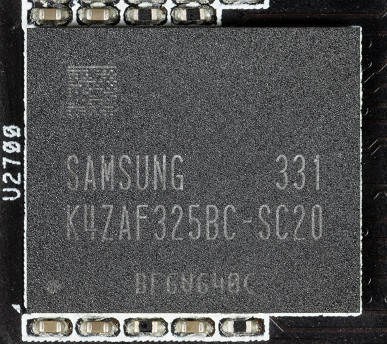
The video card is equipped with 16 GB of GDDR6 SDRAM memory, located on the front side of the PCB in eight chips of 16 Gbit each. The used Samsung memory chips (K4ZAF325BC-SC20) are designed for a nominal frequency of 2500 MHz (20000 MHz effective).
Features of the card and comparison with Gigabyte Radeon RX 7800 XT Gaming OC 16G (16 GB)
We compare this graphics card to a similar model from another manufacturer using the same GPU to confirm that both cards have similar hardware and are likely based on a reference design.
The core has an encrypted digital marking, the release date is week 2 of 2024.
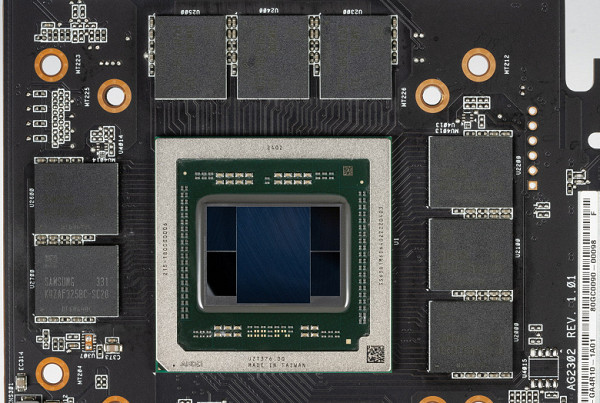
The total number of power phases in the ASRock card is 14 (11+2+1).
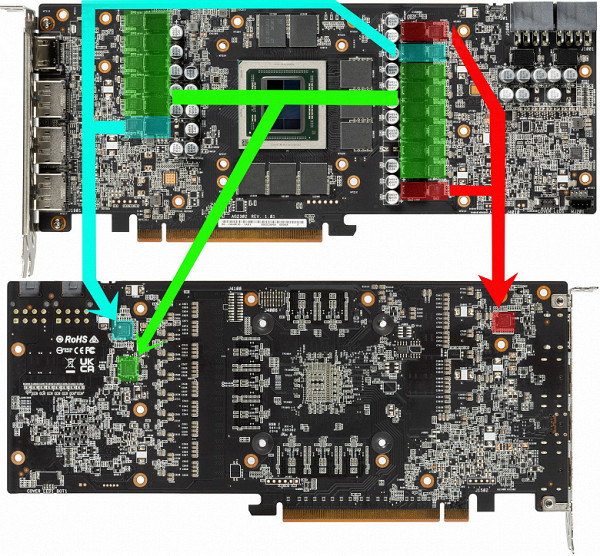
The power supply for the core is highlighted in green, the memory in red, and the SoC in blue. All PWM controllers are located on the back side of the PCB.
The power supply for the core is controlled by the MP2857 PWM controller (Monolith Power Systems), which supports up to 12 phases, but is used here to control 11 phases.

The 2 phases of power supply for the memory chips are controlled by the MP2856 PWM controller from the same manufacturer.

Exactly the same controller manages the power supply of the SoC (which is in demand in processors with chiplet architecture).
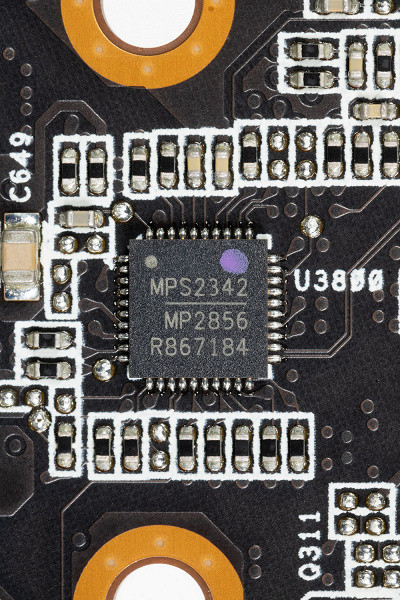
The core power converter uses DrMOS transistor assemblies — in this case MP87995 (Monolith Power Systems) — rated for a maximum of 50A.
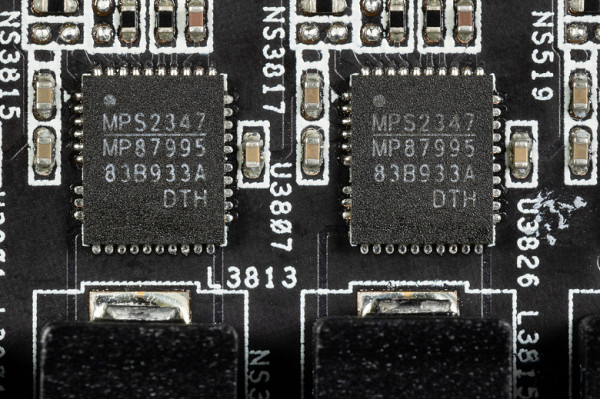
There is no separate controller for monitoring voltages and temperatures — these functions are performed by the GPU itself.
The Nuvoton controller is responsible for backlight control.
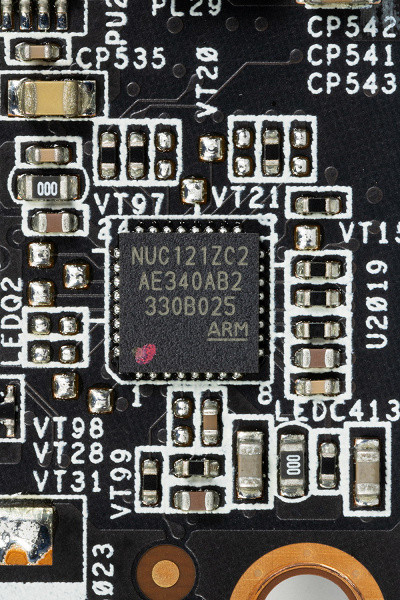
The card's stock memory frequency corresponds to the reference frequency, the Boost core frequency is 3.7% higher than the reference frequency, while the maximum core frequency is only slightly higher than the reference frequency. As a result, the performance increase in games compared to the reference card was on average 2.5%.
In tests, the power consumption of the ASRock card reached 278 W.
When manually overclocking with an increase in the power limit by 15%, the maximum frequencies were 2989/20264 MHz. However, the increase in games at 4K resolution was only 5.4% compared to the reference values, while the power consumption of the card increased to 317 W.
The ASRock card is powered via two 8-pin PCIe 2.0 connectors.

The dimensions of this card are generally standard, the thickness is 5.6 cm, so it takes up 3 slots in the system unit.

The board is equipped with four video outputs: one HDMI 2.1 and three DP 2.1.
The card is controlled via the proprietary OC Tweak utility, which offers three preset modes: OC Mode, Default Mode, and Silent Mode. The differences in core frequencies between these modes are minimal, so for overclocking, it is recommended to use User Mode with manual frequency control or the built-in AMD performance panel.
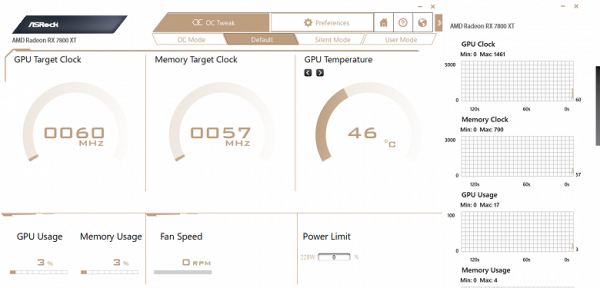
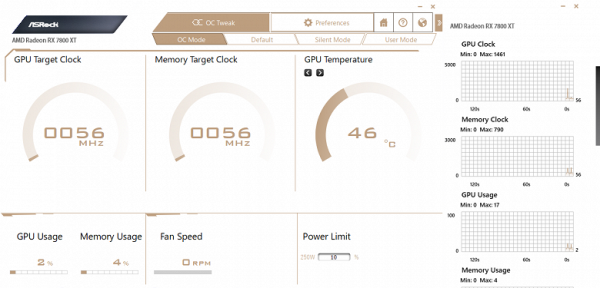
Heating and cooling
The basis of the cooling system is a massive multi-section plate nickel-plated radiator with heat pipes that distribute heat along the radiator fins.

The tubes are attached to a large nickel-plated copper plate that cools both the core and the memory chips (via thermal pads). Separate heat sinks on the heatsink are designed to cool the VRM power converters.
The back plate not only protects the PCB, but also helps cool the back of the card via thermal pads, especially in the area of the memory chips.

The card is equipped with an end metal plate, which increases the rigidity of the structure.
The radiator has a shroud with three fans with a diameter of 100 mm. Each fan has 11 blades, carefully polished with a slight ribbing to improve air flow. All fans operate at the same rotation speed.
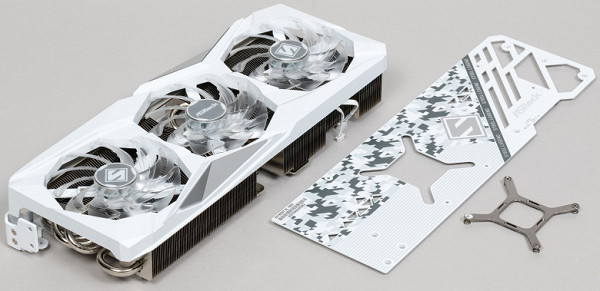
The graphics card fans stop at low load if the GPU temperature drops below 50°C and the memory chip temperature drops below 80°C. When the PC is turned on, the fans start, but after the video driver loads, the temperature is checked and they turn off. The video below illustrates this process.
Temperature monitoring:

After two hours of intense load, the maximum core temperature did not exceed 60°C, and the highest temperature in the hot spot was 78°C. The temperature of the memory chips reached 76°C, which is an excellent result for video cards of this level. The card's power consumption reached 278 W.
We filmed and sped up the 8-minute warm-up process by 50 times.
The maximum heating was observed in the central part of the PCB.
In the case of manual overclocking, we received minor changes in heating parameters, while the maximum consumption increased to 317 W:
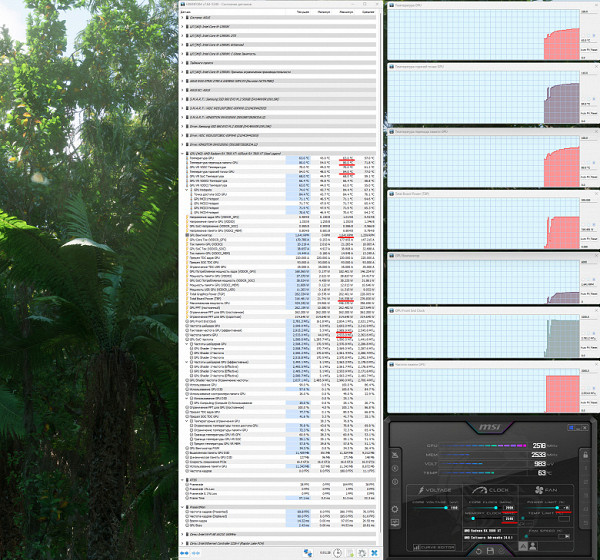
It is worth remembering that the heat generated by the card remains inside the system unit, so using a case with good ventilation is highly desirable.
Noise
The noise measurement method involves using a soundproof room with minimal reverberation. The system unit in which the testing is carried out has no fans and does not create additional noise. The background noise level is 18 dBA, which corresponds to the noise level in the room and the sound level meter. Measurements are taken at a distance of 50 cm from the video card, at the level of the cooling system.
Measurement modes:
- 2D idle mode: an Internet browser (iXBT.com), Microsoft Word and several Internet communicators are open.
- 2D mode with movie viewing: SmoothVideo Project (SVP) is used for hardware decoding and insertion of intermediate frames.
- 3D mode with maximum load: testing is carried out using FurMark.
Noise level ratings:
- Less than 20 dBA: relatively quiet
- 20 to 25 dBA: very quiet
- 25 to 30 dBA: quiet
- 30 to 35 dBA: clearly audible
- 35 to 40 dBA: loud but tolerable
- Above 40 dBA: very loud
2D idle: temperature did not exceed 37°C, fans did not operate, noise level was equal to background noise — 18 dBA.
Watching a movie with hardware decoding: no change was observed, noise level remained at 18 dBA.
3D max load: temperature reached 60°C (core), 78°C (hot spot) and 76°C (memory). The fans ran at 1500 RPM, the noise level increased to 27.4 dBA — this is classified as quiet.
The noise spectrogram did not reveal any problems.
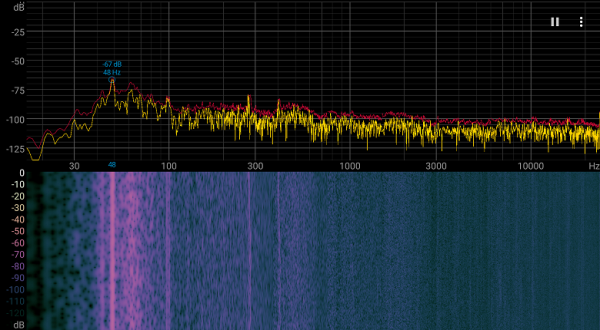
Backlight
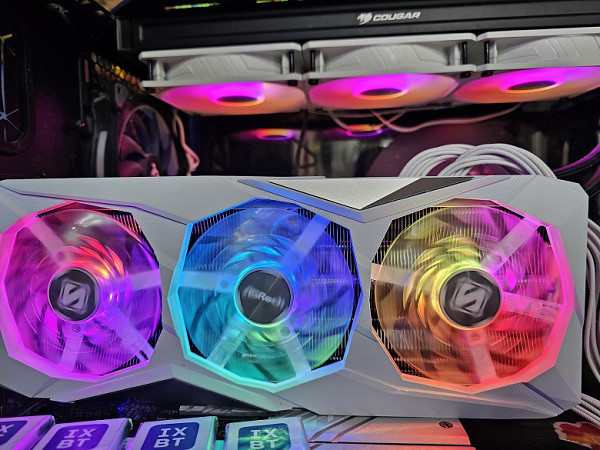
All three fans of the card are illuminated. Control is carried out via the ASRock Polychrome Sync utility. Synchronization of the backlight is possible only with ASRock motherboards.
The backlight can be easily turned off without installing software. There is a corresponding switch on the top end of the card for this purpose.
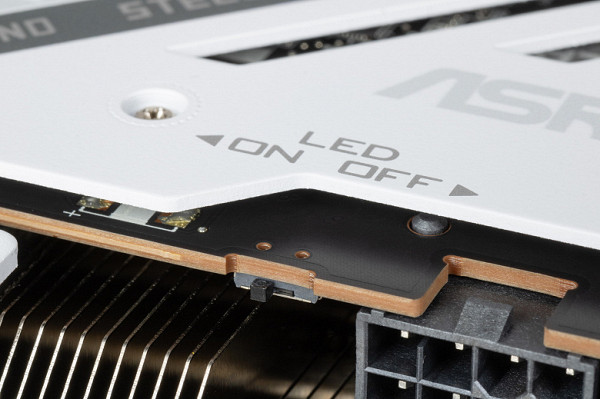
Delivery set and packaging
The package contains nothing but the traditional quick start guide.
conclusions
The ASRock Radeon RX 7800 XT Steel Legend OC (16GB) is a mid-range graphics card based on the fourth-highest-performing GPU in AMD's Radeon RX 7000 series. It will appeal to users who prefer games without ray tracing and dynamic scaling, but want to add a stylish element to their PC with transparent walls or windows.
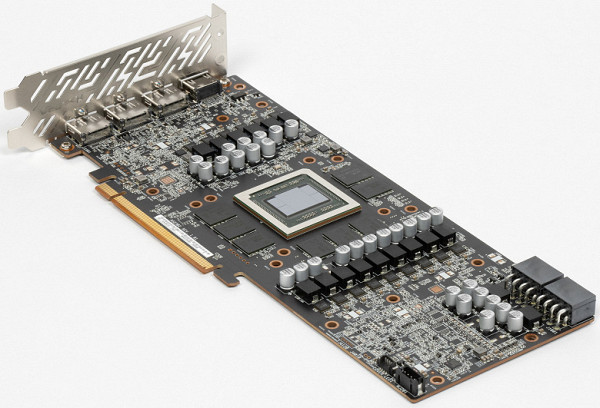
The ASRock Radeon RX 7800 XT Steel Legend OC graphics card consumes up to 278 W and is equipped with a highly efficient yet quiet cooling system. Its dimensions are 33 cm in length and 13 cm in height, taking up 3 slots in the case. On board there is a standard set of video outputs: 3 DP 2.1 and 1 HDMI 2.1.
The card has two 8-pin PCIe 2.0 power connectors. A special feature of the model is a stylish white design and ARGB fan lighting, which can be disabled using a hardware switch. The manufacturer offers a 3-year warranty on this graphics card.
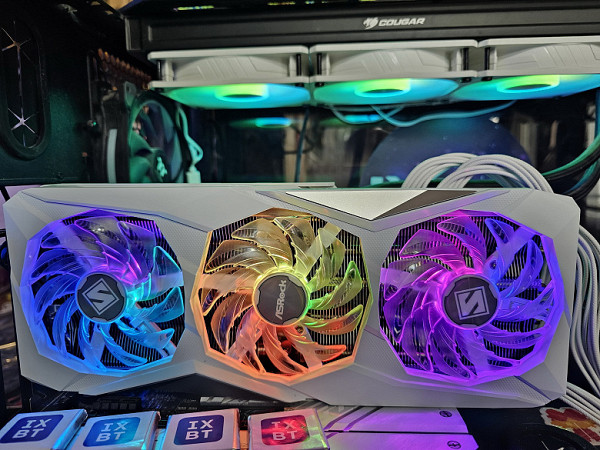
As a reminder, in classic games without ray tracing (RT), the Radeon RX 7800 XT occupies an intermediate position between the GeForce RTX 4070 Ti and GeForce RTX 4070, closer to the latter. In games with RT and scaling technologies, the card demonstrates weaker results, and the GeForce RTX 4070 becomes a more attractive option, despite the smaller memory capacity (12 GB versus 16 GB for the Radeon RX 7800 XT).
It is important to note that the Radeon RX 7000 family has an improved image output subsystem. Even this mid-budget card has DisplayPort 2.1 UHBR13.5 connectors, which gives an advantage over GeForce cards, which are limited to DisplayPort 1.4a. This allows for 4K at 240 Hz output without streaming compression over a single cable. The hardware capabilities for encoding and decoding video also correspond to older solutions and fully support the AV1 format.




